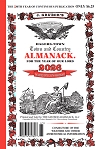Debunking Polar Vortex Myths
Dr. Lee provided great insight into the seasonality of the stratospheric polar vortex, how it impacts North American weather and his hopes of future research to best predict its variability and impacts to our weather. Below is the question-and-answer session from Chad’s interview with Dr. Lee:
What is the stratospheric polar vortex? A large-scale circulation 10 to 15 km above the ground that forms in September, typically reaches peak intensity in January and February and dissipates in April to early May. It forms because of the imbalance in temperatures during the winter, with the Arctic cooling off rapidly due to lack of sunlight while the equatorial regions remain much warmer. As a result of this sharp temperature contrast, a strong westerly jet stream forms in the stratosphere and encircles the cold Arctic air, forming the stratospheric polar vortex.
Why do meteorologists have difficulty forecasting what it’s going to do each winter? The stratospheric polar vortex is influenced by the weather variability in the troposphere (where we live) and meteorologists are limited by how far in advance weather patterns can be predicted. In addition, the effect on the vortex of a certain weather pattern depends on the state of the vortex, which itself depends on the effects of weather patterns – so it can quickly become unpredictable!
What does research show about the cyclical nature of the polar vortex? During the winter season, a particularly strong or weak stratospheric polar vortex can persist in its same state (strong or weak) for as long as one to two months at a time. It only rarely changes abruptly from strong to weak status within a few days, sometimes during the onset of a sudden stratospheric warming event.
What can meteorologists foresee happening when the stratospheric polar vortex is weak versus strong? A weak stratospheric polar vortex can send the jet stream in the troposphere (where our weather occurs) further south. This can invite cold plunges of air from the Arctic to dislodge somewhere into the Northern Hemisphere with increased frequency.
Can a weakened or strong polar vortex early in the fall season help meteorologists predict what might transpire during the winter? It is possible that a weakened polar vortex late in the late fall can lead to a stronger polar vortex in the middle of winter, although this is far from guaranteed. On the contrary, if the polar vortex spins up quickly and becomes very strong or tightly wound in November, this can effectively shift its seasonality ahead by a month or so, potentially increasing the risk of a Sudden Stratospheric Warming during the early winter.
What does a Sudden Stratospheric Warming imply? The westerly winds around the stratospheric polar vortex decelerate rapidly and reverse to easterlies. This leads to an increased risk for a cold air outbreak when the troposphere feels the downward influence from the stratospheric vortex disruption. However, there are other factors like the Madden-Julian Oscillation and El Niño or La Niña that can have a greater impact on the weather and limit the probability that a stratospheric warming will induce a major cold outbreak.
Why does the stratospheric polar vortex weaken in the spring? Increased solar radiation as the sun gains latitude helps to weaken the vortex. That in itself makes the polar vortex less susceptible to a dramatic final warming event, one in which it rapidly decays for the remainder of the season.
What helps generate a major final stratospheric warming in the spring? One way this can happen is when we have an unusually strong polar vortex that persists from mid-winter into March characterized by fast-moving winds around the circulation center. This can then provide the right conditions for a dramatic final warming event, which – like sudden warmings in mid-winter – can increase the risk of cold outbreaks across the Northern Hemisphere.
What do you hope the outcome of future stratospheric polar vortex research leads to in the future? An understanding of what causes the strong or very weak stratospheric polar vortex to couple or influence the weather where we live (in the troposphere) since there are many cases where they don’t link-up in the normal way. In other words, when we have an anomalously strong or weak polar vortex it is still very difficult to know what the real-world weather impacts will be in the next several weeks.
Will global warming impact the frequency or impact of Stratospheric Warming Events and if so, how? This is a highly contested issue because the sample size of warming events is limited in the last 40 years, but there doesn’t appear to be a huge implication on stratospheric warming events. One study suggests global warming is leading to more sea ice loss and this phenomenon can trigger more Stratospheric Polar Vortex ‘stretching’ events. The outcome can lead to more cold outbreaks in the Eastern U.S.
Since temperatures in the lowest few kilometers of the atmosphere are warming fastest in the Arctic compared to anywhere else on Earth, are cold outbreaks going to lose their luster going forward? While the source region for cold outbreaks will be warmer, an increased frequency of cold outbreaks over any one location can dampen the warming trend.
Chad MerrillWeather Prognosticator
Hagerstown Town and Country Almanack
National Weather Association
Weathercasters Seakl of Approval


















